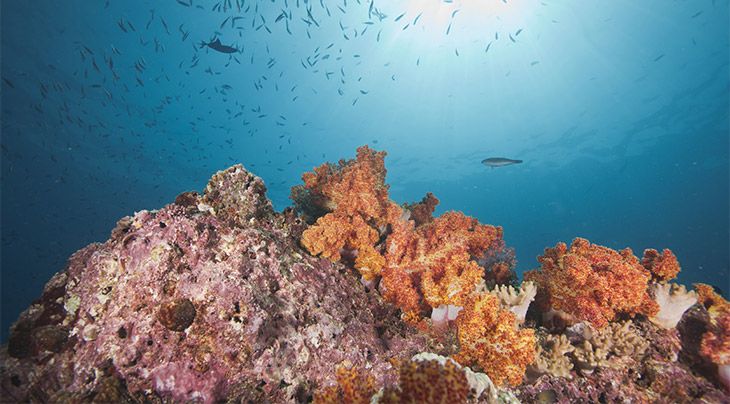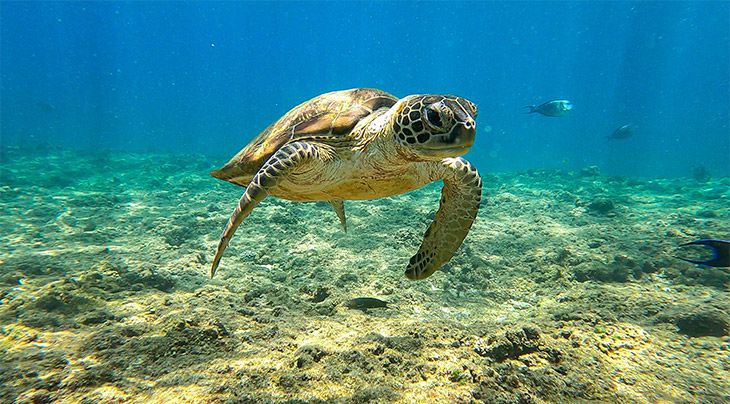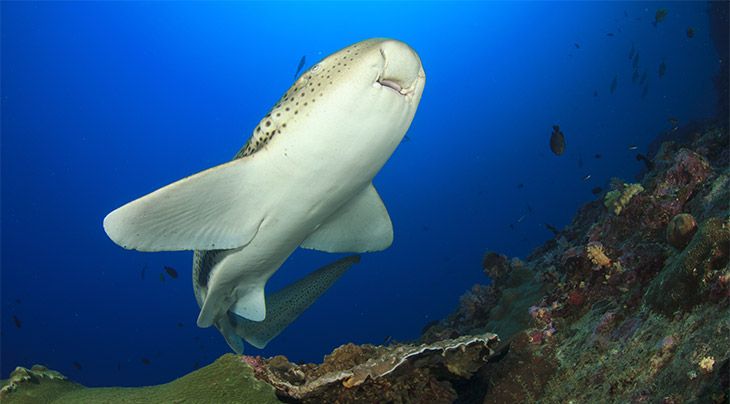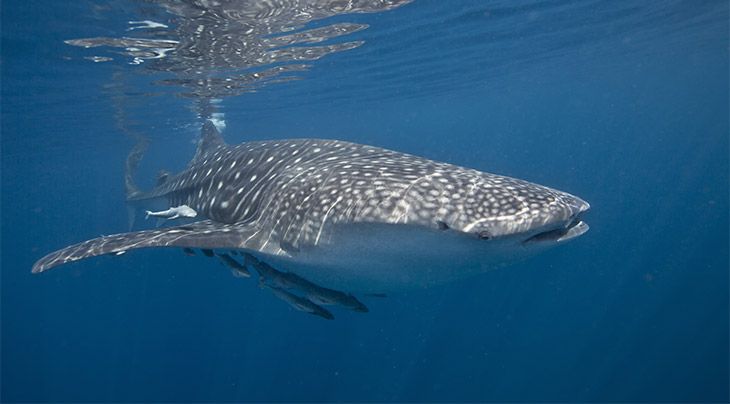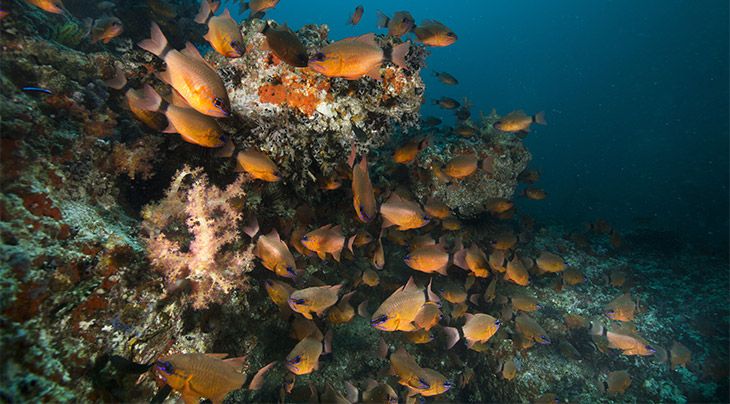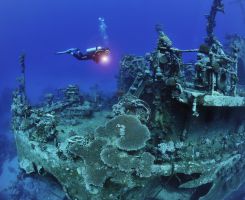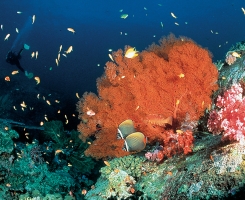- More More
- Blog
- Inspire me
- Groups
- Offers More
- Dive Courses More
- Liveaboards
More

Liveaboard Trips
On-board accommodation offering the opportunity to live right over the dive sites and to experience secluded dives...
Diving regions...
- LATEST AVAILABILITY BY REGION
- Red Sea availability
- Maldives availability
- Indonesian availability
- Socorro Mexico availability
- Galapagos availability
- ALL LIVEABOARD DIVING REGIONS
- Bahamas
- Bikini Atoll
- Caribbean
- Cocos Island
- Destinations
MoreDIVING REGIONS...
Our Top destinations....Why not try....
Find a trip
- Resort
- Liveaboard
Oman Liveaboards
Oman Facts
Area: 212, 500 sq. km
Population: 2.9 million
Language: Arabic, English, Farsi, Baluchi, Urdu
Time: GMT + 4
Electricity: 220 / 240v, 50Hz, British style 3 pin plug
Extending out from the Arabian Sea into the vast expanse of the Indian Ocean, Oman offers liveaboard diving away from the crowds.
Her dynamic and nutrient-rich waters play host to a high diversity of marine life, from thriving coral reefs to whale sharks and humpback whales. It is possible to dive Oman by liveaboard from both her north and south coastlines, with liveaboard itineraries switching during the year to offer the best diving in each region.
Northern itineraries visit sites such as the Daymaniyat Islands with flourishing coral reefs, while southern itineraries offer more adventurous diving for those with some liveaboard experience.
DIVING from SALALAH & MIRBAT
Discover the extensive reefs of southern Oman and the Hallaniyat Islands! Departing from Mirbat’s small harbour, the itinerary will be exploratory in nature, for divers comfortable in a relatively remote location.
Situated in the southern area of Oman's Dhofar region, this unspoilt coastline, stretching as far as the eye can see, offering sheltered bays to explore in an area steeped in history and heritage. Set against the stunning backdrop of deserted beaches, with the Jebel Al Qara rising steeply out of the Dhofar mountain chain, this area offers a level of excitement and adventure hard to find in other destinations so close to home.
Where's the best liveaboard diving in Oman?
Southern Oman
Discover the extensive reefs of southern Oman and the Hallaniyat Islands! Departing from Mirbat's small harbour, the itinerary will be exploratory in nature, for divers comfortable in a relatively remote location.
The Hallaniyat Islands
Sitting in the waters straddling the north Indian Ocean and the Arabian Sea, the Hallaniyat Islands comprise five islands lying in an east to west string in the south-eastern waters of Oman’s Dhofar district; Al Hasikiyah, As Sawdah, Al Hallaniyah, Shinays & Al Qibiliyah. (The islands may also be referred to as the Khuriya Muriya Islands.)
The largest island is Al Hallaniyah at 56 km², the others being relatively small, but this remote string of islands offers a wealth of dive sites to be discovered. The geography is typical of the rugged desert like peaks typical to Oman, with its highest point at approximately 465 metres.
City of Winchester wreck
Sitting upside down in 28–30 metres of water, this historic 150m long vessel holds the spurious title of the first British ship to be sunk in an act of war by Germany in WWI.
Rumours also abound of other wrecks from the famous fleets of Vasco da Gama. Are you ready to make your first discovery?
Northern Oman
The Daymaniyat Islands
The Daymaniyat Islands helped place Oman on the world dive map and is a wonderful dive safari for those looking to avoid the crowds. This string of offshore islands north of Muscat has been placed under the protection of UNESCO and provides divers with pristine soft coral gardens, walls and overhangs, leopard sharks and abundant fish life. Dive sites such as The Aquarium are aptly named with an incredible abundance of marine life, huge shoals of fusiliers streaming across the reef with honeycomb moray eels poking out of holes. Sira Island offers three dive sites in one, starting with a sloping wall and sandy bottom, ideal for spotting feather rays and marble rays, turn the corner for a carpet of leather and broccoli soft corals, finishing off shallower with colourful hard corals and pulsing anthias. The dive sites in their protected nature reserve show their health with large cuttlefish and vibrant nudibranch, on the islands themselves turtles have been seen nesting and are often spotted under the water. During dive safaris, the resident population of spinner dolphins are often seen during the crossing.
The best diving conditions are found in the area from April to October due to the wind direction and better clarity in the water, plus, June to September are the best months to have the chance to encounter migrating whale sharks. Water temperature varies due to the thermoclines by drops and rises of +/- 8 centigrade, which fluctuates within the water column and often brings a change of visibility. Due to this, the relatively deep average maximum depth of the dives, and the possibility of strong currents its best suited to the more advanced divers.
Fahal Islands
The Fahal Islands towards the north boasts an incredible variety of coral species. There are two small wrecks, which draw a large amount of marine life, including the occasional black tip reef shark, various rays and both green and hawksbill turtles.
Bandar Khairan
Bandar Khairan is an area of outstanding beauty, boasting rocky outcrops, deserted beaches and small islands such as Ras Abu Dawud that are only accessible by boat. The underwater scenery is similarly dramatic with picturesque walls and reefs festooned with healthy finger and fan corals in purples and green; all teeming with marine life. The shallow, sheltered dives of Bandar Jussa, which are great to dive in all conditions, afford lovely, simple night diving experiences. Bhandar Khairan is an area where turtles breed, and these beautiful animals can be seen on nearly every dive.
Al Munassir Wreck
In 2003 the Al Munassir, a 3,000 tonne vessel, was sunk at Bandar Khairan and has developed into a beautiful artificial reef dive. Although relatively new, this wreck is already smothered in corals and home to plenty of marine life. Easily accessible, the Al Munassir lies at 26m with her top at just 8m.
What to see when
Oman’s diverse reefs are fed throughout the year by nutrient-rich seas. While this can bring variable visibility, it also ensures an abundance of marine species on every dive.
Large grouper, leopard shark, stingray, barracuda, turtle and rare moray eel species can be observed on many dives, with an abundance of mid-water fish species and occasional larger visitors.
Whale sharks
On northern Oman itineraries, it's possible to see whale shark, particularly between September and November. These friendly wanderers are drawn to the area by the abundance of food.
Humpbacks, if you are lucky!
On southern itineraries to the Hallaniyat Islands, humpback whale are regularly sighted from the surface, along with some of their smaller cetacean friends; the dolphin. There's also a good chance of manta ray, along with large grouper and superb coral on relatively shallow reefs.
When's the best time to dive in Oman by liveaboard
The Oman Explorer operates seasonal itineraries to the best dive sites in Oman, offering diving experiences away from the crowds and plenty of underwater highlights.
Northern itineraries operate between June and November when water temperatures are at their warmest. Southern itineraries to the Hallaniyat Islands are offered during the winter months between December and April.
Twice a year, transition cruises are offered as the liveaboard moves from one area to the other, offering the chance of some exploratory diving for those with good experience.
Who is liveaboard diving in Oman suitable for?
Sea and underwater conditions can be more variable in Oman than in other destinations. It's this variety that makes the waters so abundant, however liveaboards in this region are best for those with some experience. It's recommended to have a minimum of 50 dives and Advanced Open Water certification. Open Water divers may also join, but are recommended to have the deep diver speciality.
Please note that water visibility can be changeable in this area of the ocean, averaging around 20 metres. Divers should each travel with their own surface signalling devices.
Water temperatures can also vary quite widely at different depths and on the same dive, therefore a thicker wetsuit is recommended.
OMAN EXPLORER SAMPLE ITINERARIES
The Oman Explorer operates seasonal itineraries to the best dive sites in Oman, offering diving experiences away from the crowds and plenty of underwater highlights.
Hallaniyat Islands: Mirbat & Salalah MV or Mirbat to Sifah (or reverse)
Musandam Peninsula MV (seasonal - please contact us for further information)
Flight Information
Into Muscat & Salalah: Flights with Oman Air direct into Muscat from London Heathrow. Connecting flights to Salalah from Muscat.
Into Dubai: Flights with Emirates into Dubai non-stop from London Gatwick, Heathrow, Manchester, Birmingham, Glasgow and Newcastle (conditions may apply on certain regional departures).
Flight Duration: Approx. 7 - 8.5 hours
Departure tax: N/A
Passports & Visas
Please always check your own entry requirements regardless of your nationality. Your passport should always have at least 6 months validity on date of return travel. Always check for last minute changes in entry requirements. Nationalities other than British citizens should check with their own consular office.
British passport holders can enter Oman for up to 14 days without a visa. If you wish to stay for longer than 14 day you can either apply for a visa online before departure or obtain one on arrival. For information can be found on the FCO website, Entry to Oman.
Vaccinations
Vaccination requirements are subject to change and should be confirmed before departure. For the most up to date advice please consult your travel clinic or GP. Further information regarding vaccinations for travel to this country can be found at www.fitfortravel.nhs.uk and from your local healthcare provider. There are no compulsory vaccinations for travel to Oman, but we recommend protection against typhoid, tetanus, hepatitis A and polio.
MY Oman Explorer
Saman Explorer
"Just back from an excellent trip on the Saman Explorer around the Hallaniyat islands.
This is a well appointed liveaboard (NB Complimentary 15L cylinders if desired). The staff and food were excellent. Andy Travis, the enthusiastic dive guide, established a safe and relaxed approach to the diving. This is a remote area with limited support if anything goes wrong but the diving is not very deep. Many of the sites hadn't been dived before and thus was a real adventure - sometimes real gems, others unlikely to be repeated. As the brochure notes, the vis is not comparable to many diving destinations but there is an incredible abundance of life to look at. We missed out on the whales but saw many mantas and a leopard shark. It was great to land on and explore some of the islands.
If you have the time, consider taking the Mountain, Desert and Beaches extension. Oman is a fascinating country and this is a quick way to get a flavour of this amazing country.
"
Graham Illing - UK
MY Oman Explorer
Great time on Saman Explorer
"A really easy week of liveaboard.
Apart from the City of Winchester wreck at 28m, a shallow week of laid back diving suitable for both relative beginners, and for those looking for a change from the Red Sea. No humpback whales on my trip unfortunately, but an awesome dive with a pod of dolphins! Plenty of Rays, and even Leopard Sharks. Lots of interesting life about.
A refreshing change of scenery to Egypt. Great stuff!
"
Bryce Ford - UK
MY Oman Explorer
Musandam - full of surprises
"We took a trip on Saman Explorer during the first week in September. Having dived in many of the world's hotspots, we were not expecting much, given the lack of publicity of this area, but were very pleasantly surprised indeed! Firstly, the journey is relatively painless, a direct flight to Dubai and a road transfer thereafter saving both time and money on multiple flights, the transfers were efficient and comfortable.
Secondly, we have no complaints about the boat at all. The catering is fairly basic but perfectly edible. If you are a coffee and English tea connoisseur, take some supplies with you!
The topside scenery in this area is nothing short of spectacular. Raw, barren and awe-inspiring. The underwater scenery is magnificent, incredibly beautiful and colourful soft coral covering acres of walls and mounts, with hard coral gardens in the shallows.
There are plenty of fish and a fair amount of macro. Highlights for us were whalesharks on two dives, torpedo and other rays, mobula and eagle rays, huge Spanish dancers at large during the day, other nudi's both very large and very small, 40cm pipefish and an abundance of trunkfish, McCosker's wrasse males displaying. Every dive seemed to produce something of interest to even the most experienced of divers.
A few of the dives were a little lively current-wise, some divers aborted a couple after ten mins. because they couldn't cope, so perhaps don't go here with under 100 dives or some good experience in current. But most dives were fairly calm and relaxed.
All in all a great trip, will do the same next year if the boat goes up there again."
Jane Knobel - Cyprus
MY Oman Explorer
Diving from Saman Explorer
"Had some good diving, the boat was good, there were only nine divers on a boat built for 22. The crew were excellent and the was food. I will keep Regal in mind for other trips.
The first dive was a test in Mirbat (1&1/2 hour drive from Salalah) where we picked up the boat. The visibility was only 10-15m and not a great deal of life so we were a little apprehensive, but after we travelled to the islands overnight (200km steam) the diving there was far better with vis of 30m+ and lots of fish.
The bottom tends to be rocky with sand interspersed between these outcrops, the coral was good in the shallow gardens and the fish were plentiful, loads of smaller fish shoals sweet lips etc. Other sightings included: big Morays (some free swimming in the day), bigger Parrot Fish and Trigger Fish, large Stingrays, Green Turtle, Lemon Shark, big Groupers (a number of varieties) plus Squid and Cuttlefish at night. Plus, two wrecks pretty flattened but teeming with fish!
Compared to say the Maldives the coral is not quite as good but very presentable because of the slightly reduced visibility, in comparison smaller fish the same but has other medium sized comparable fish that are larger (Parrot Fish, Trigger Fish, Lion Fish) than the Maldives showing there are more mature fish (maybe fishing hasn't had as much impact on them) but it doesn't have the big fish such as Manta, Shark, Whale Shark. The turtles here were larger and usually in cave. Would suggest a torch is useful to appreciate the full colour and investigate the crevices in the rocks..."
P. Howarth - UK
Oman Aggressor
A great feeling of exploration around the Islands
"Outstanding! Best ever accommodation for me on a liveaboard. The crew were outstanding, Dive Guides were attentive, dive briefs were good. There was a great feeling of exploration around the Islands. The guides are working very hard to find good dive sites around the islands. My favourite memory was the sense of complete isolation and exploration."
Eddie Clamp - UK
Oman Liveaboard Vessels
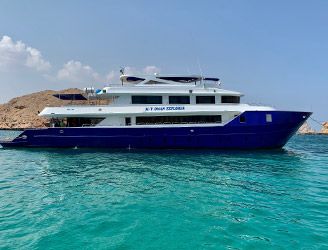
MY Oman Explorer
This 34m, steel hulled vessel comfortably accommodates 22 divers, in 10 spacious twin-cabins and 1 master cabin. Nitrox is av...
VIEW DETAILS
